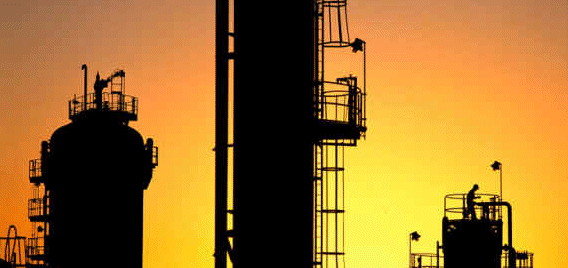Chemical and Process Engineering Resources

Bitumen Blowing
Asphaltic bitumen, normally called "bitumen" is obtained by vacuum distillation or vacuum flashing of an atmospheric residue. This is " straight run" bitumen. An alternative method of bitumen production is by precipitation from residual fractions by propane or butane- solvent deasphalting.
The bitumen thus obtained has properties which derive from the type of crude oil processed and from the mode of operation in the vacuum unit or in the solvent deasphalting unit. The grade of the bitumen depends on the amount of volatile material that remains in the product: the smaller the amount of volatiles, the harder the residual bitumen.
In most cases, the refinery bitumen production by straight run vacuum distillation does not meet the market product quality requirements. Authorities and industrial users have formulated a variety of bitumen grades with often stringent quality specifications, such as narrow ranges for penetration and softening point. These special grades are manufactured by blowing air through the hot liquid bitumen in a BITUMEN BLOWING UNIT. What type of reactions take place when a certain bitumen is blown to grade? Bitumen may be regarded as colloidal system of highly condensed aromatic particles (asphaltenes) suspended in a continuous oil phase. By blowing, the asphaltenes are partially dehydrogenated (oxidised) and form larger chains of asphaltenic molecules via polymerisation and condensation mechanism. Blowing will yield a harder and more brittle bitumen (lower penetration, higher softening point), not by stripping off lighter components but changing the asphaltenes phase of the bitumen. The bitumen blowing process is not always successful: a too soft feedstock cannot be blown to an on-specification harder grade.
The blowing process is carried out continuously in a blowing column. The liquid level in the blowing column is kept constant by means of an internal draw-off pipe. This makes it possible to set the air-to-feed ratio (and thus the product quality) by controlling both air supply and feed supply rate. The feed to the blowing unit (at approximately 210 0C), enters the column just below the liquid level and flows downward in the column and then upward through the draw-off pipe. Air is blown through the molten mass (280-300 0C) via an air distributor in the bottom of the column. The bitumen and air flow are countercurrent, so that air low in oxygen meets the fresh feed first. This, together with the mixing effect of the air bubbles jetting through the molten mass, will minimise the temperature effects of the exothermic oxidation reactions: local overheating and cracking of bituminous material. The blown bitumen is withdrawn continuously from the surge vessel under level control and pumped to storage through feed/product heat exchangers.
By: Hardeep Hundal, edited by Jeroen Buren
Energy Articles

 FB
FB

7 Comments
Thank u Sir !
Great article to understand the functions of whole refinery, !!